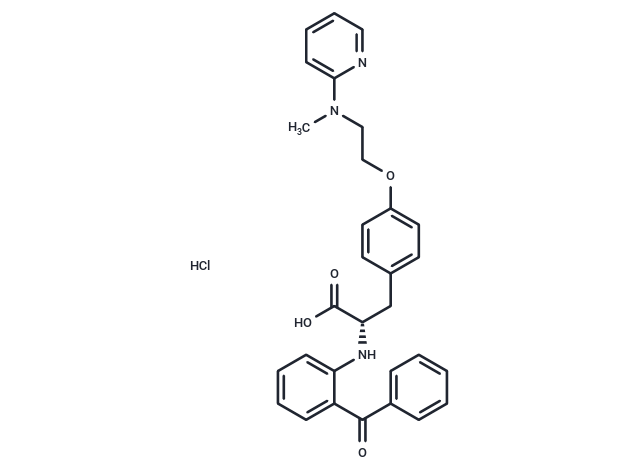Shopping Cart
Remove All Your shopping cart is currently empty
Your shopping cart is currently empty
Highly selective orally active peroxisome proliferator-activated receptor (PPAR)γ agonist (pEC50 values are 8.05, < 4 and < 4 for human PPARγ, PPARα and PPARδ receptors respectively). Decreases glucose, fatty acid and triglyceride levels following oral administration in vivo.

| Pack Size | Price | USA Warehouse | Global Warehouse | Quantity |
|---|---|---|---|---|
| 10 mg | $980 | 35 days | 35 days |
| Description | Highly selective orally active peroxisome proliferator-activated receptor (PPAR)γ agonist (pEC50 values are 8.05, < 4 and < 4 for human PPARγ, PPARα and PPARδ receptors respectively). Decreases glucose, fatty acid and triglyceride levels following oral administration in vivo. |
| Targets&IC50 | PPARγ (human):8.84 (pKi) |
| Molecular Weight | 532.04 |
| Formula | C30H30ClN3O4 |
| Cas No. | 1217466-21-1 |
| Smiles | Cl.CN(CCOc1ccc(C[C@H](Nc2ccccc2C(=O)c2ccccc2)C(O)=O)cc1)c1ccccn1 |
| Storage | Powder: -20°C for 3 years | In solvent: -80°C for 1 year | Shipping with blue ice/Shipping at ambient temperature. |
| Solubility Information | DMSO: Soluble |
| Size | Quantity | Unit Price | Amount | Operation |
|---|

Copyright © 2015-2026 TargetMol Chemicals Inc. All Rights Reserved.